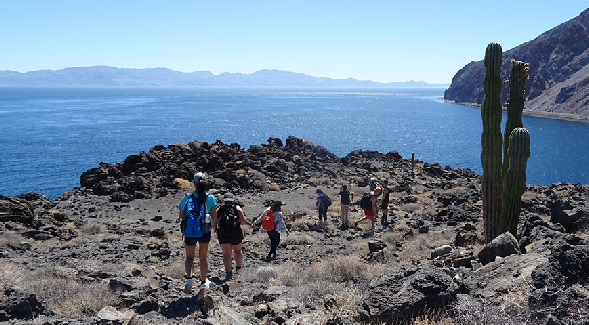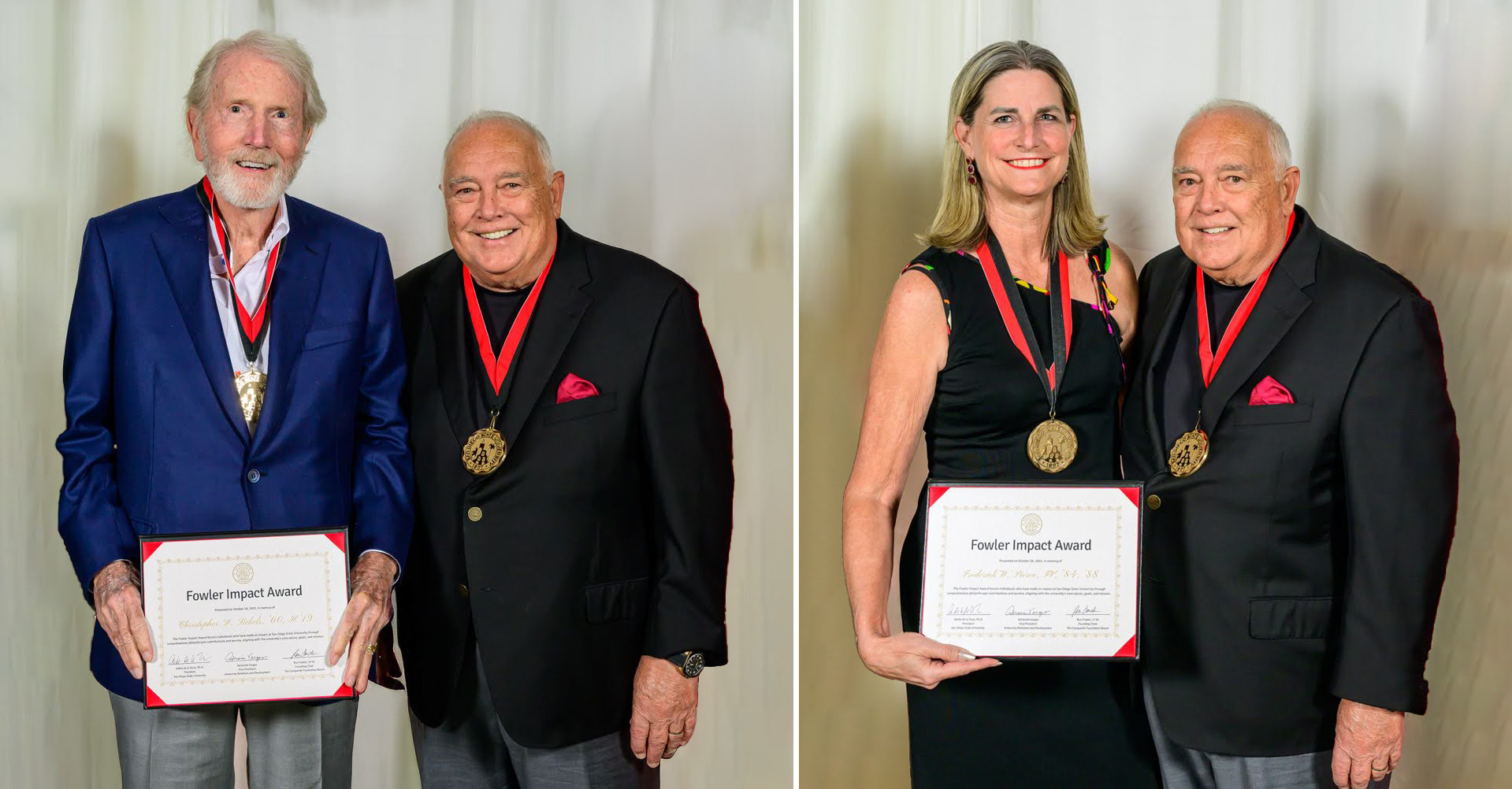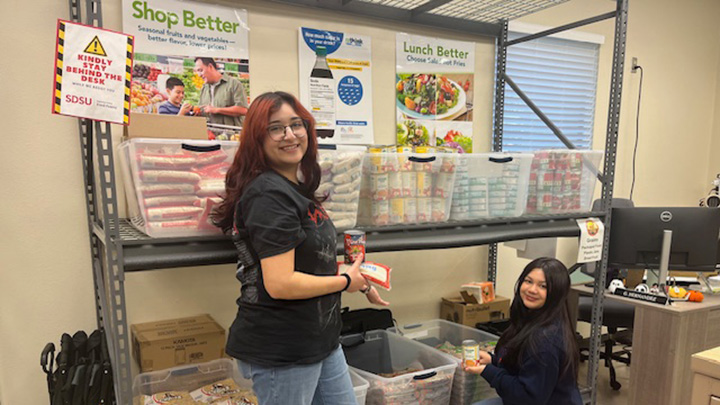Climate Change, Conservation and China: Even More Summer Research Abroad
Faculty are conducting critical fieldwork in Mexico, China, Alaska and elsewhere.

Dozens of San Diego State University professors are abroad this summer, conducting fieldwork for critical research in five of the seven continents.
This is the fourth and final installment in a series that highlights faculty research abroad this summer.
Climate Change in the Arctic
The Arctic might be famously cold, but it is warming at double the rate of many countries in the Northern Hemisphere.
SDSU visiting scientist Terenzio Zenone is working at several sites in Alaska — including a remote SDSU-run field station in Ivotuk — studying the different ways Arctic greenhouse gas emissions are contributing to climate change.
Much of the Arctic’s warming is happening during its coldest seasons, a relatively recent discovery by SDSU researchers and one that scientists are still trying to quantify.
SDSU researchers have found that not all water in soil freezes during the Arctic winter. Top and bottom soil layers insulate the middle layer, allowing the breakdown of organic matter to continue in extremely cold temperatures. This creates methane, which is piped up to the earth’s surface through plants’ root systems.
“The warming of the globe is affecting the Arctic at an unprecedented rate, causing tundra ecosystems to release substantial amounts of greenhouse gases and further contributing to climate change,” Zenone said. “This study allows us to monitor the Arctic’s climate throughout the year so we can better understand the factors that control these emissions.”
Zenone works with biology faculty Donatella Zona and Walter Oechel, who oversee SDSU’s Alaska field station and regularly conduct fieldwork there. This summer he is working alongside SDSU undergraduate Marco Montemayor and lab technician Guadalupe Barajas, as well as scientists from the University of Sheffield, and the University of Exeter where he is a research fellow. The National Science Foundation (NSF) funds their work.
The group is collecting data on greenhouse gases present in the air and measuring factors such as temperature, solar radiation and soil water content. The scientists are also preparing the field stations to collect data over the winter, when they are unmanned due to the inhospitable climate.
They hope to gain a better understanding of the cycle of global warming in the Arctic, allowing scientists to build more reliable climate change models.
Biodiversity in Mexico
Millions of years ago, Baja California separated from mainland Mexico when the earth’s tectonic plates shifted. To this day, the peninsula carries plants similar to ones on the mainland. Yet many millennia of separation have caused flora on the peninsula to develop differently from their mainland counterparts and spawn new species.
SDSU biology professors Lluvia Flores-Rentería and Sula Vanderplank, along with a group of six undergraduates and three graduate students, spent much of the summer exploring Baja California and Southern California, gathering a baseline of information about plants in the Mediterranean and desert regions shared by Mexico and the United States.
The group is examining how manmade and natural barriers affect the genetic diversity of plant species. For example, a species is more susceptible to drought and disease when not given enough room to propagate naturally.
They are collecting, analyzing and storing plant samples, gaining insights on species evolution through genetic sequencing. Their data can be used to inform local conservation efforts of rare plant species.
The research is part of an SDSU program that aims to encourage Hispanic undergraduates to pursue careers in STEM fields. The researchers mentor Hispanic students, offer workshops and introduce them to practicing scientists.
“We want to empower these students and encourage them to become role models and future scientists,” said Flores-Rentería.
While in Mexico, students met with researchers from the Center for Scientific Research and Higher Education, the Autonomous University of Baja California and Terra Peninsular, a Mexican nonprofit.
A U.S. Department of Agriculture (USDA) grant for Hispanic-serving institutions funds their work.
Mobile Learning in China
How can mobile devices improve learning outcomes in large college classes?
Learning design and technology professor Minjuan Wang spent the summer in China investigating this question. She is researching how mobile learning—a teaching method that uses mobile devices to support learning anytime, anywhere—affects student interaction and outcomes in large college classes.
While in China, Wang worked with faculty from Hainan University to analyze data from large classrooms that use mobile learning. She reviewed existing studies on mobile learning and determined how instructors create and distribute content.
Wang plans to examine cultural differences in mobile learning by comparing the dynamics and interactions of the Chinese classes to ones held at SDSU. She hopes to leverage her research to create better learning experiences for students from a range of cultural backgrounds.
“We will use the data to improve the way we design rich and effective mobile learning experiences in undergraduate courses, whether they are face-to-face or online,” Wang said.
Read Part I in the Summer Research Abroad Series: Earthquakes, Ecosystems and Endangered Monkeys
Read Part II in the Summer Research Abroad Series: Migrants, Memorials and Mass Incarceration
Read Part III in the Summer Research Abroad Series: Forests, French History and Filming in Fiji
Climate Change, Conservation and China: Even More Summer Research Abroad Faculty are conducting critical fieldwork in Mexico, China, Alaska and elsewhere.


